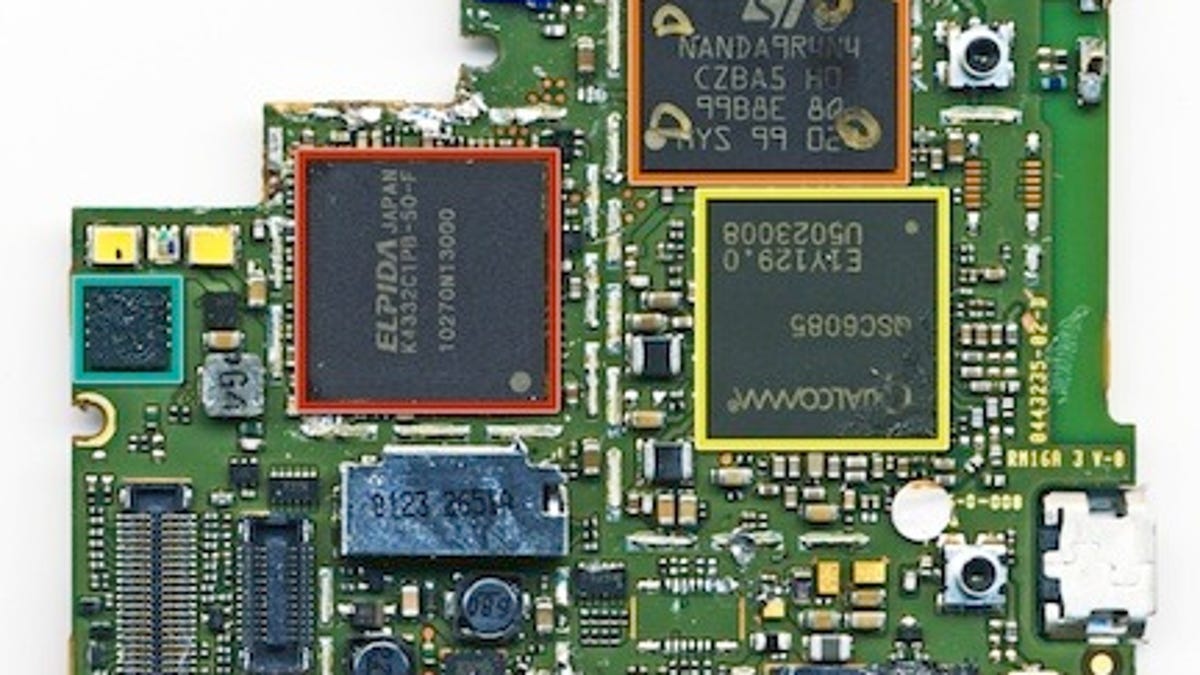Inside the Droid 2? A lot of upgraded silicon
The Motorola-Verizon Droid 2 is a souped up version of the original Droid, thanks to some major chip improvements revealed in iFixit's teardown of the device.

Under the hood, the Motorola-Verizon Droid 2 is really a hopped-up version of the original Droid.
While practically a clone of the original Droid on the outside, the Droid 2 is not the same inside. As a previous post spelled out, underneath the skin beats a new Texas Instruments processor that is about twice as fast (based on the megahertz rating) of the original Droid 550MHz (Droid) versus 1,000MHz, i.e., 1GHz (Droid 2).
And as seen in the iFixit photo, Japan-based Elpida Memory supplies the 512MB DRAM module, twice the capacity of the original Droid. As if to prove how tightly linked RAM is to the processor, the TI OMAP 3630 chip is buried underneath the Elpida module, according to iFixit.
What else is inside? An 8GB flash memory module from SanDisk and more TI silicon. Namely, TI's power management and WLAN Bluetooth/FM chips--the latter a major upgrade from the original Droid.
With all of this TI silicon--and critical silicon, at that--inside, you would think that Motorola might have something to say about it. But you won't find a peep about TI on Motorola's Droid 2 tech specs page. Why? One can only speculate. Motorola may want to protect its brand. Another reason: smartphones are not PCs, which are usually adorned by Intel and Microsoft stickers competing with the PC maker for brand recognition. "We do not disclose the specifics on the series," a Motorola representative said.
Nevertheless, a lot of the new goodness inside the Droid 2 is directly attributable to upgraded silicon. I guess that's what teardown sites are for.

